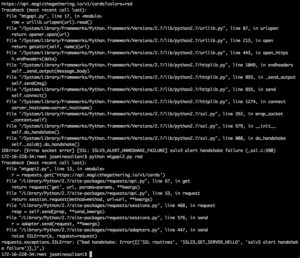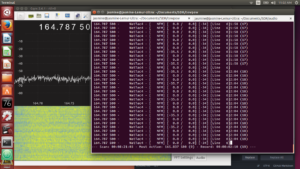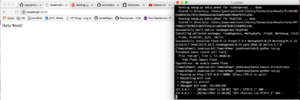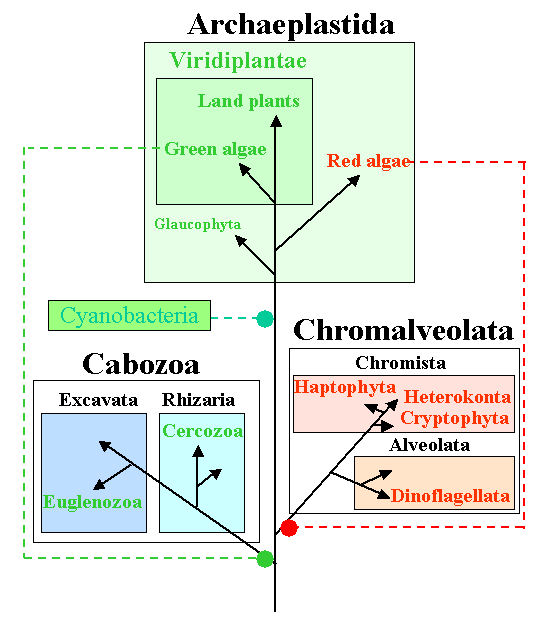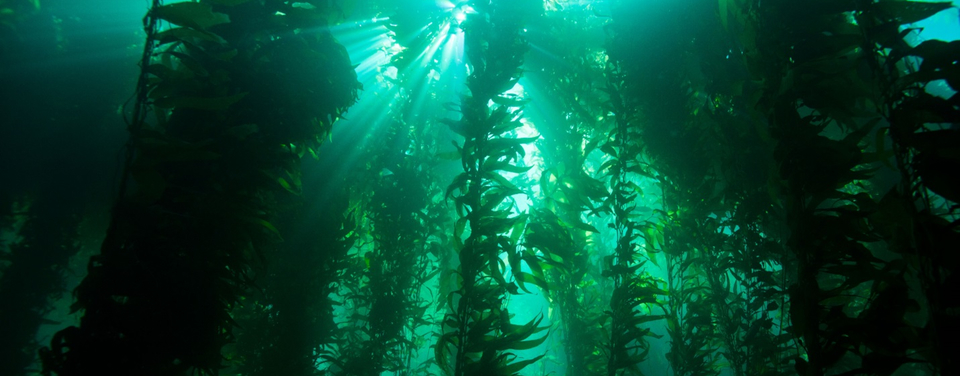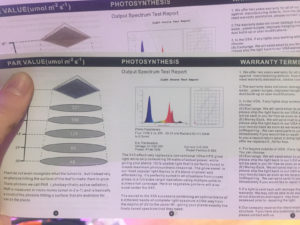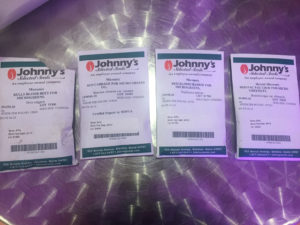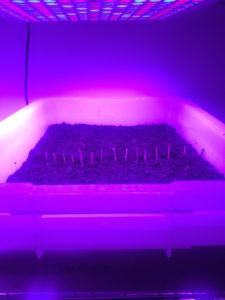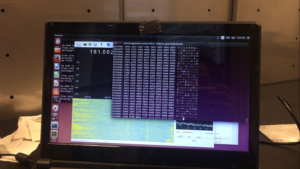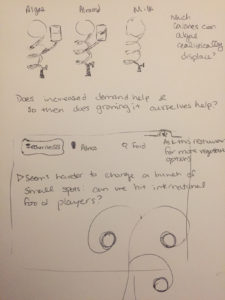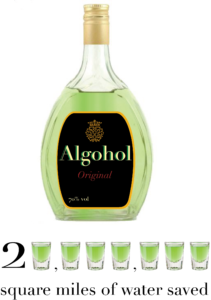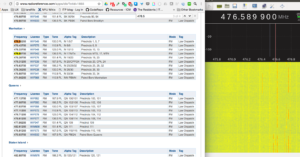Daily practice: macrophotography
The daily task I chose was macrophotography which utilizes the amplification strategy, very literally. I did my best photographing my growing plants with a magnifying lens that was apparently left on the junk shelf. I don’t even know if I’m calling this the right thing because I know so little about photography… lol.
As time progressed I thought about the exponential growth which is central to humans’ relationships with earth’s resources, spelled out in Limits to Growth and elsewhere, and the relatively fast (but still so slow) growth of plants that (on the whole) sustain us.
This was also so, so fun. I researched a bit more about photography with microscopes. On day 6, so a bit late, I met with Eric Rosenthal to learn more about this. He was so helpful and the tools we introduced me to were so illuminating! He pointed me to software for focus layering, which seems very important if I’m to continue with photographing small and/or microscopic things. The depth of field on these lenses is just so limited. He also showed me I could 3D print a device to hook my iPhone to a microscope (as opposed to using more complicated equipment) to take more-microscopic photos this way.
I made these composites of each day.
Day 1
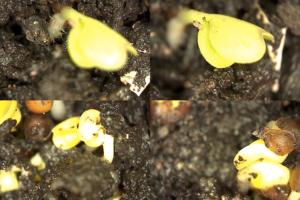
Day 2
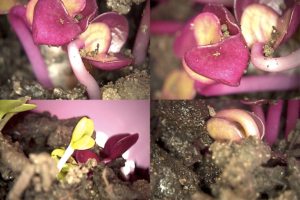
Day 3
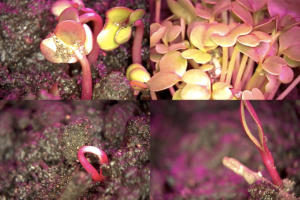
Day 4
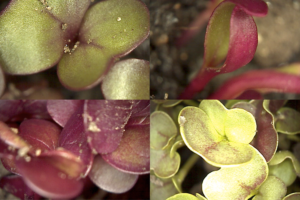
Day 5
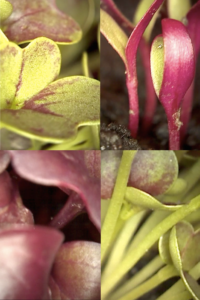
Day 6
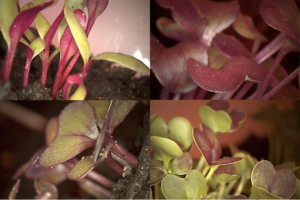
Day 7
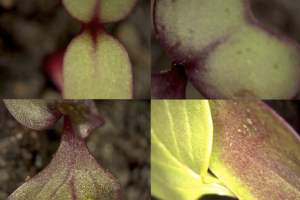
This week I also got to see Trevor Paglen and Kate Crawford speak on AI and the increased concentration of capital & computing power in just a few entities (perhaps another exponential trend?). A photographer, Paglen noted the power imaging has in giving things and people power. It made me wonder how creating images of things we might not ordinarily see, or consider small or irrelevant, changes value and power dynamics.
A quote from my Reading and Writing Electronic Text reading also stood out, as a sort of meta-commentary (re: jazz and poetry): “The improviser can’t edit but must fall back on the most basic standard of all: is this interesting to me, right now?”
Other imaging experiments
From Eric’s advice, I created the following images from one small micro green (that I picked and then ate!!!! I felt a little bad) using the focus layering technique. What’s cool about Helicon is you can also create 3D renderings, which I tried. None were very effective since the leaf, stem, and root are all pretty flat. The root worked the best.
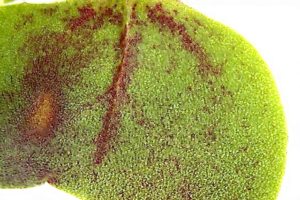
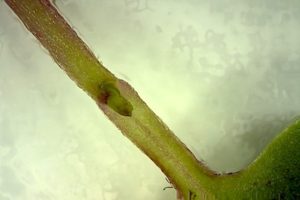
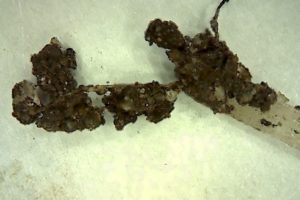
I also tried taking photos of plants through a small microscope Eric lent me that magnifies 60-120x and just my iPhone.
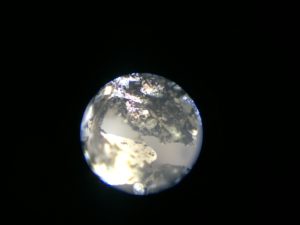
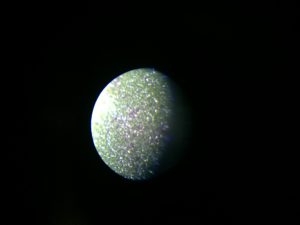
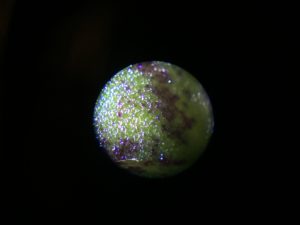
These reminded me of moons or like a tiny earth.
Algae
Finally a good explanation of different types of algae, and the associated confusion:
The internal cell structure of algae varies greatly. Microalgae lack complex multicellular structures that are found in seaweeds. The cyanobacteria or blue-green algae have a prokaryotic cell structure and closely resemble bacteria. Eukaryotic algal cells have a nucleus and usually one or more chloroplasts; they also have mitochondria, Golgi bodies, endoplasmic reticulum, and other typical eukaryotic organelles. Despite the difficulty in presenting a clear definition for algae, thousands of books, scores of scientific journals, and numerous internet websites are dedicated solely to compiling our knowledge of algae”
By a string of connections I was put in touch with Lauren, who is doing research on algae biofuels. She directed me to the Algae Handbook (e-book) (quoted above), which thankfully is available online from the NYU library, and UTEX , UT Austin’s Algae culture collection. I asked about the potential of algae to mitigate phosphorus and nitrogen runoff, and she thought one easy use of algae was to clean up waste water from hydroponics facilities. When it comes to algae blooms as a result of of other runoff, she pointed to the difficulty, expense, and risks of introducing new organisms into an open environment. She shared a bit about her own and other’s ongoing research. She also gave very useful direction for beginning to grow algae on the ITP floor, and so much more information to think about and sift through.
This last piece was incredibly timely, since I just started working with Sara, a student in Stefani’s BioDesigning the Future of Food class who is also interested in growing algae. Using some of the research materials Lauren sent along, we will reconvene to order algae strains before spring break, and begin our process after we get back.
I think it might be very interesting to do similar macrophotography while growing algae!! And perhaps underwater?
